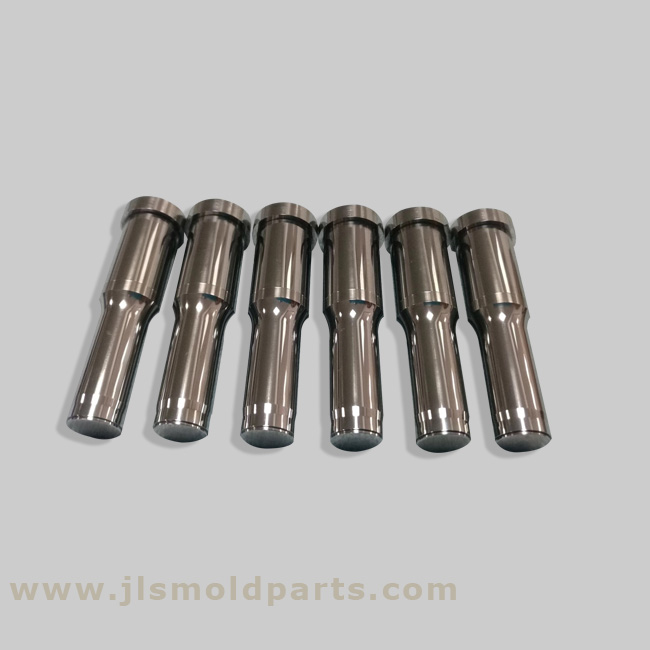
The punch is also called an upper die, a male die, a punch pin, etc. The punch is a metal part mounted on a stamping die, and is applied to direct contact with a material to deform and cut the material. The die punches are generally made of high-speed steel and tungsten carbide. The molds mounted on the press are assembled with the die punch. Die punch directly contact the material (metal or Non-metallic) and makes the material to separate or plastically deform to obtain the desired part. Stamping is a pressure processing method in which a pressure is applied to a material by means of a mold mounted on a press at a room temperature to cause separation or plastic deformation to obtain a desired part.
In China, the precision of the punch can reach ±0.002mm, which is the international leading level. The material of the punch is mainly made of high speed steel. The commonly used materials are SKH9, SKH55, SKH59 of Japan,and M2, M35 and M42 of United States. The main feature of the material is that the material can maintain good red hardness and high wear resistance when punching at high speed. Toughness is also very good, and can guarantee a certain degree of toughness; there are also some powder high-speed steel materials, commonly used for are ASP23, ASP30, ASP60. Their performance is better than high-speed steel, but its price is high, and the inventory is not complete, and the scope of usage is relatively small.
Tungsten carbide punches are new products that can be produced by a few companies in recent years. They are mainly made of carbide alloys. They have high toughness requirements for materials. They require high technical, and the production cost is also high. With the improvement of the quality of our products, more and more manufacturers are expecting to increase the service life of the punch. The titanium coating on the punch surface is a very good choice. The advantage is that the work piece size control after titanium plating is better, the thickness is generally 2-3UM, and the deformation of the punch is also small, which is very suitable for the surface treatment of the punch rod. After the titanium plating, the surface friction coefficient of the punching rod is reduced, and the surface hardness is increased, so that the wear resistance of the punch is greatly increased, and the life is greatly prolonged. The types of titanium layers are commonly TIN, TCN, TIALN, ALCRN, etc. The production of punch in China is mainly based in the Yangtze River Delta and Pearl River Delta regions. The punch is required to be made of high quality raw materials, which mainly imported, and domestic materials are improving but not stable enough. In addition, the heat treatment of the punch material is also very technical, and the heat treatment process such as quenching temperature, tempering temperature and super-cooling time should be designed in combination with the specific use environment of the punch.
The precision of carbide punches used in precision molds is high, and the consistency of the products requires that each carbide punch of mass production should meet the dimensional accuracy tolerance requirements to maximize the service life of the mold. The work of stamping die is continuous operation, and the service life requirement of the precision carbide punch becomes the key requirements. According to the material and thickness of the stamping, different carbide materials should be selected. Under normal circumstances, the thicker the stamped product, the lower hardness and higher toughness of the carbide should be selected. The harder the stamped material, a slightly lower hardness carbide should be choosen. This rule can effectively avoid the punch being damaged. The thinner or lower hardness of the stamped metal sheet, the higher hardness carbide punch should be used, so that the service life of the carbide punch can be improved.





